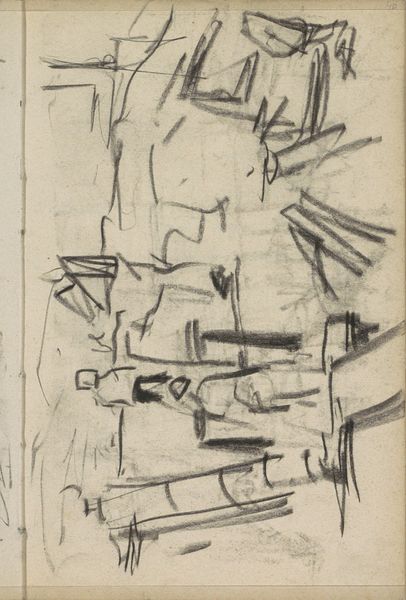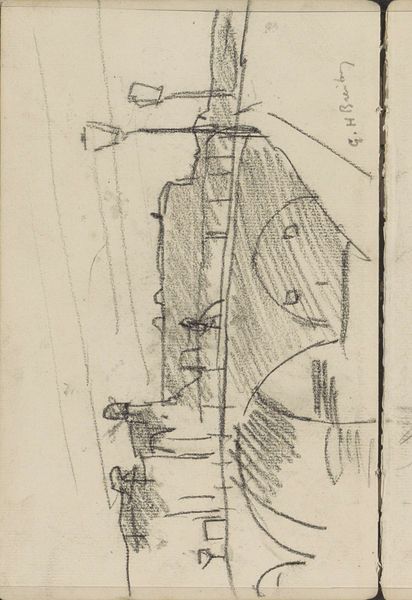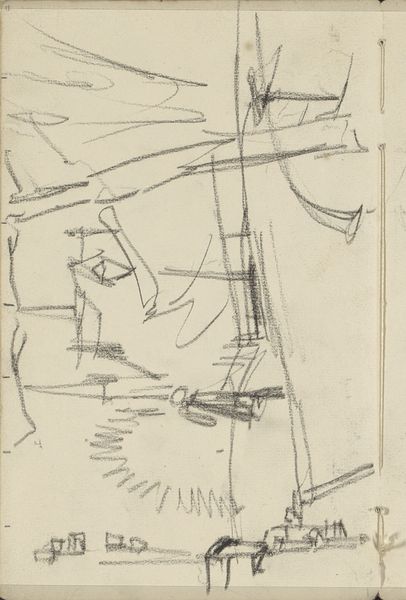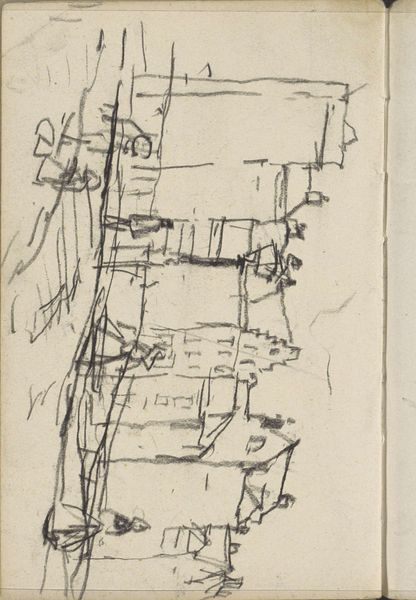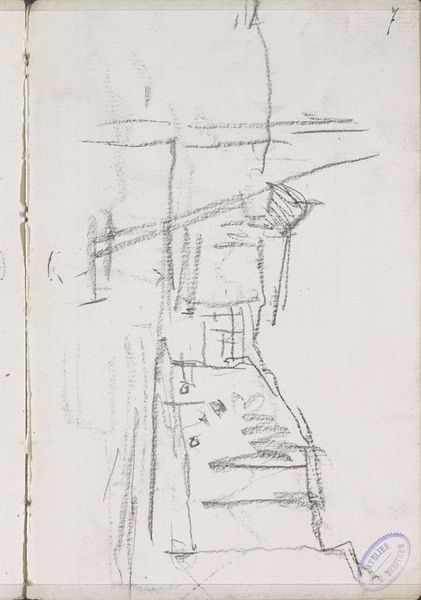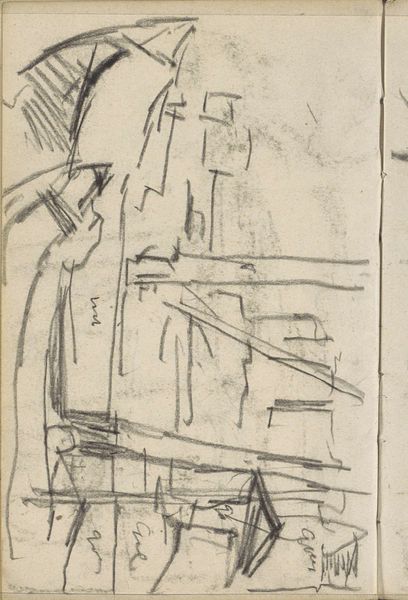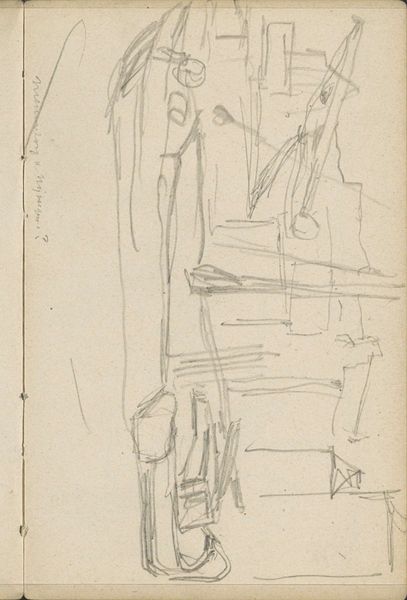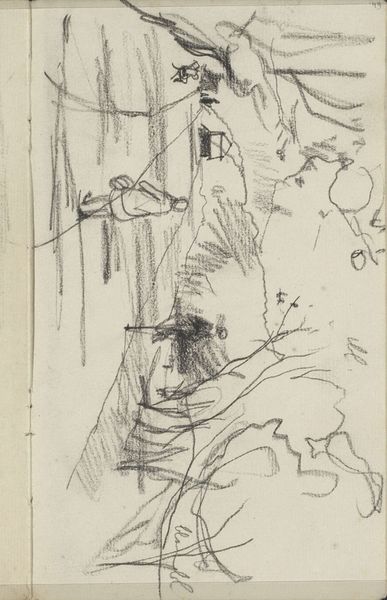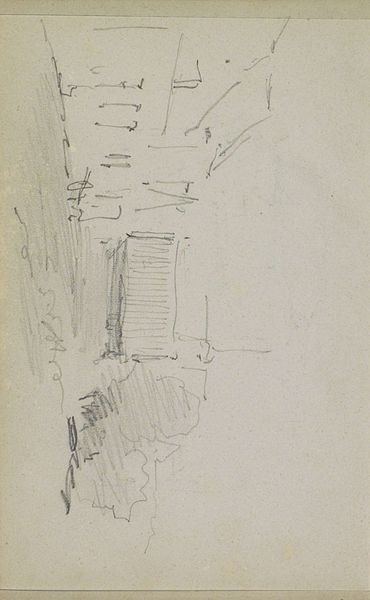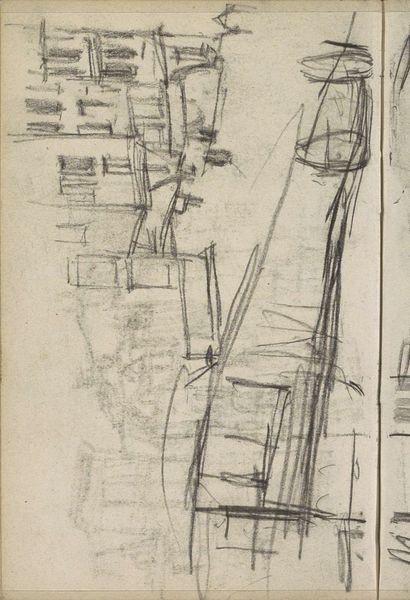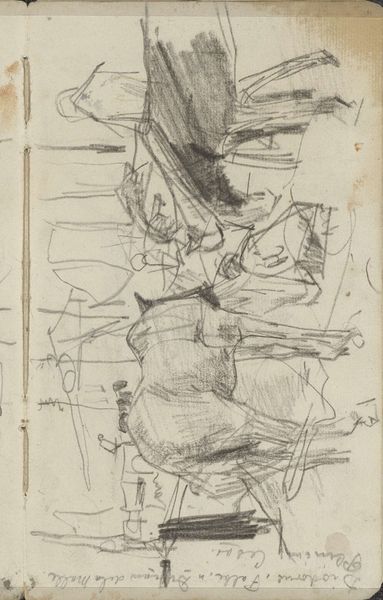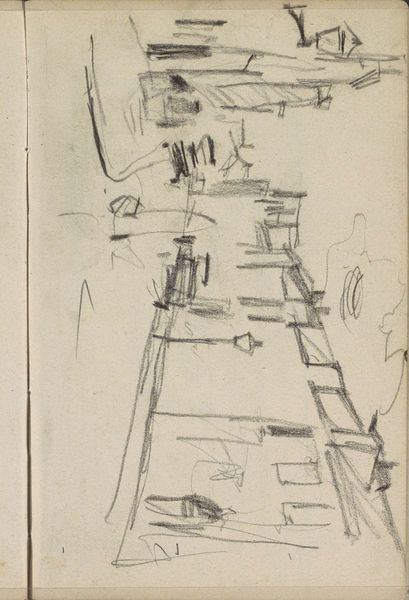
Gezicht op de Prinsengracht ter hoogte van de Brouwersgracht te Amsterdam 1907
0:00
0:00
georgehendrikbreitner
Rijksmuseum
Copyright: Rijks Museum: Open Domain
Editor: This is George Hendrik Breitner’s "View of the Prinsengracht at the Brouwersgracht in Amsterdam," created in 1907 using graphite. It’s such a quick sketch; the lines are so loose and free, almost abstract. What do you make of this fleeting snapshot of Amsterdam, and how does it fit within the broader art world? Curator: Breitner’s sketchbook offers a glimpse into the visual culture of Amsterdam at the turn of the century, particularly the city’s representation in art and public consciousness. This seemingly casual sketch aligns with the rise of Impressionism and its focus on capturing momentary impressions, challenging traditional academic art. Think about it: whose reality is this sketch capturing, and for what purpose? Was it purely a personal exercise, or was Breitner considering its public role? Editor: That’s a really good question. I wonder if he intended to exhibit these quick sketches? To me it looks really rough and unfinished. Curator: That’s what makes it so interesting. It pulls back the curtain on the artistic process. This challenges the notion of art as a polished product by embracing the rawness of observation. What do you think this implies about the evolving relationship between the artist, their subject, and their audience in the early 20th century? Editor: It definitely suggests a shift toward a more intimate and immediate connection. Like, we're seeing what the artist sees, in the moment. That’s so different from more formal portraits or landscapes! Curator: Exactly! And that shift is not accidental. The art market and exhibition culture were expanding, enabling artists to explore and present less conventional works. Art institutions were simultaneously solidifying the canon. So how does an image like this either resist or perpetuate these cultural dynamics? Editor: Wow, I never thought about it that way. Now I’m looking at this not just as a simple sketch, but as a potential commentary on art itself! Curator: Precisely. Examining its role within art history and its public life illuminates the complexities of artistic intention and cultural impact. Editor: Thanks! I am so much better prepared for my art history 101 class, because it helped me rethink everything I learned in class about "finished" art!
Comments
No comments
Be the first to comment and join the conversation on the ultimate creative platform.
